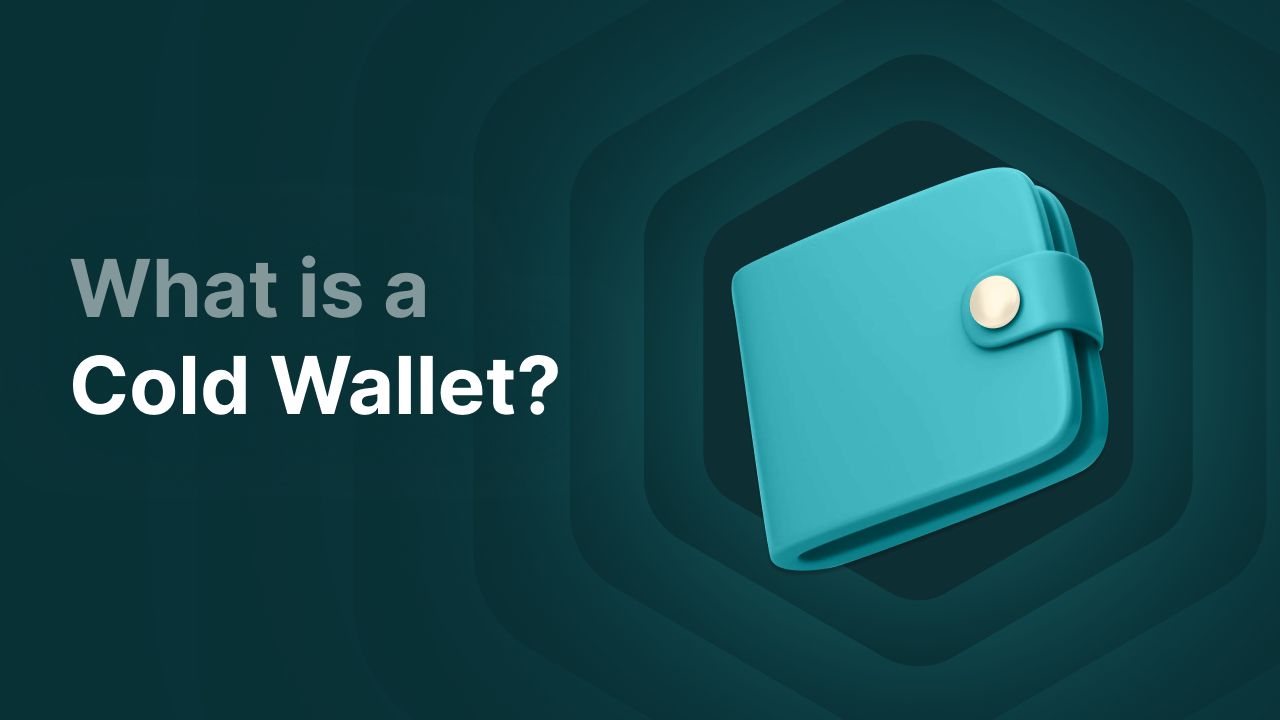What is a cold wallet and how does it protect your cryptocurrencies?

What is a cold wallet?
A cold wallet is a type of crypto wallet in which the private key is stored completely offline, making it extremely secure. Unlike hot wallets, cold wallets are not directly connected to online networks. This means that private keys (the codes that give access to crypto) are better protected against hacks, phishing, and malware.
Cold wallets are often used by investors and companies who value the security of their crypto assets and want to store them for a longer period. Cold wallets are generally considered the safest way to store crypto, as long as they are used correctly.
Key Takeaways
- A cold wallet stores crypto private keys completely offline, providing strong protection against online attacks.
- A crypto wallet does not store the coins themselves, but the digital keys (private and public keys) that provide access to your crypto on the blockchain.
- The main difference between hot and cold wallets is the internet connection: hot wallets are online and convenient, while cold wallets are offline and more secure.
- There are different types of cold wallets such as hardware, air-gapped, paper, metal, and sound wallets, each with their own pros and cons.
- Cold wallets are best suited for long-term storage of large amounts of crypto by users who prioritize security over convenience.
What is a crypto wallet?
Before we go into what a cold wallet is, let’s briefly explain what a crypto wallet is.
A crypto wallet is a digital wallet that allows you to store, send, and receive cryptocurrencies such as Bitcoin and Ethereum. Unlike a physical wallet, a crypto wallet doesn’t store the coins themselves but the digital keys that give you access to your crypto on the blockchain. Each wallet consists of two keys: a private key, which is your secret access code or seed phrase that lets you perform transactions, and a public key, which works like an account number that others can use to send you crypto.
The private key is the most important part of your wallet: whoever has it has full control over the cryptocurrencies associated with it. There are different types of wallets. With a custodial wallet, a third party (such as an exchange) manages your private keys, while with a non-custodial wallet you manage the keys yourself and thus have full control over your assets. Crypto wallets are further divided into two main categories: hot wallets and cold wallets. Hot wallets are connected to the internet. Cold wallets, on the other hand, are completely offline and provide maximum security. Let’s explain the differences.
Hot wallets vs. cold wallets
The biggest difference between cold and hot wallets is the connection, but there are several other important distinctions.
Types of cold wallets
There are several types of cold wallets, each with its own features, security levels, and usability.
1. Hardware wallets
Hardware wallets are the most popular and reliable form of cold storage. These are physical devices, often resembling a USB stick, that securely store your private keys. They typically use a PIN code, recovery phrase (seed phrase), and sometimes a built-in screen to confirm transactions. The private keys always remain offline on the hardware wallet. Well-known examples of hardware wallets include Ledger and Trezor.
2. Air-gapped devices (Offline software wallets)
Air-gapped devices, or offline software wallets, are computers or devices that are never connected to the internet and can sign transactions via QR codes or USB drives. These types of cold wallets are extremely secure but require more technical knowledge and are less user-friendly.
3. Paper wallets
Paper wallets are one of the oldest forms of cold wallets, where the private key and public key are printed on paper or displayed as a QR code. This makes them completely offline but vulnerable to loss, fire, or water damage. Nowadays, paper wallets are often discouraged since generating/printing them can occur through insecure systems.
4. Metal wallets
Metal wallets are a durable evolution of the paper wallet. The seed phrase is engraved on metal, offering protection against fire and moisture. Some people use these types of wallets mainly as a backup for hardware wallets, not for transactions themselves.
5. Sound wallets
A rare and experimental type of cold wallet is the sound wallet, where the private key is converted into an audio file stored on a CD, vinyl, or USB. It might sound interesting, but sound wallets are not very practical and can be prone to technical errors.
When should you choose a cold wallet?
You might want to use a cold wallet if:
- You own large amounts of crypto.
- You plan to hold your crypto for the long term.
- You value the protection of your crypto over convenience.
However, traders who trade frequently often use a combination of hot and cold wallets, where they use a hot wallet for daily transactions and store the rest in cold storage. Which type of cold wallet you choose depends on your preferences for protection and usability.
Advantages of a cold wallet
- Very high security: offline storage prevents hacks.
- Full control: you manage the private keys and thus have full control.
- Ideal for long-term storage: perfect for HODL investors.
- Durable: hardware and metal wallets can last for years.
Disadvantages of a cold wallet
- Less user-friendly: transactions require extra steps.
- Cost: most cold wallets, such as hardware wallets, are not free.
- Risk of loss: if you lose the device or seed phrase, your access is permanently lost.
How to use a cold wallet?
Once you’ve chosen a cold wallet, you need to take a few simple but important steps to use it:
- Set up the wallet: Follow the manufacturer’s instructions to configure your hardware wallet or use reliable software to create your paper wallet.
- Send crypto to your cold wallet: Buy crypto on a broker or exchange, or send crypto from another wallet to your cold wallet. Always double-check the receiving address (your public key) before sending.
- Store safely: Keep your cold wallet in a safe, dry, and well-protected place. Make sure no one else has access to it.
Final thoughts
A cold wallet provides the highest level of security for storing cryptocurrencies because the private keys are stored offline. Although it is less convenient to use than a hot wallet, it is an essential choice for anyone who wants to store their crypto securely for the long term, especially for larger amounts or institutional investments.




